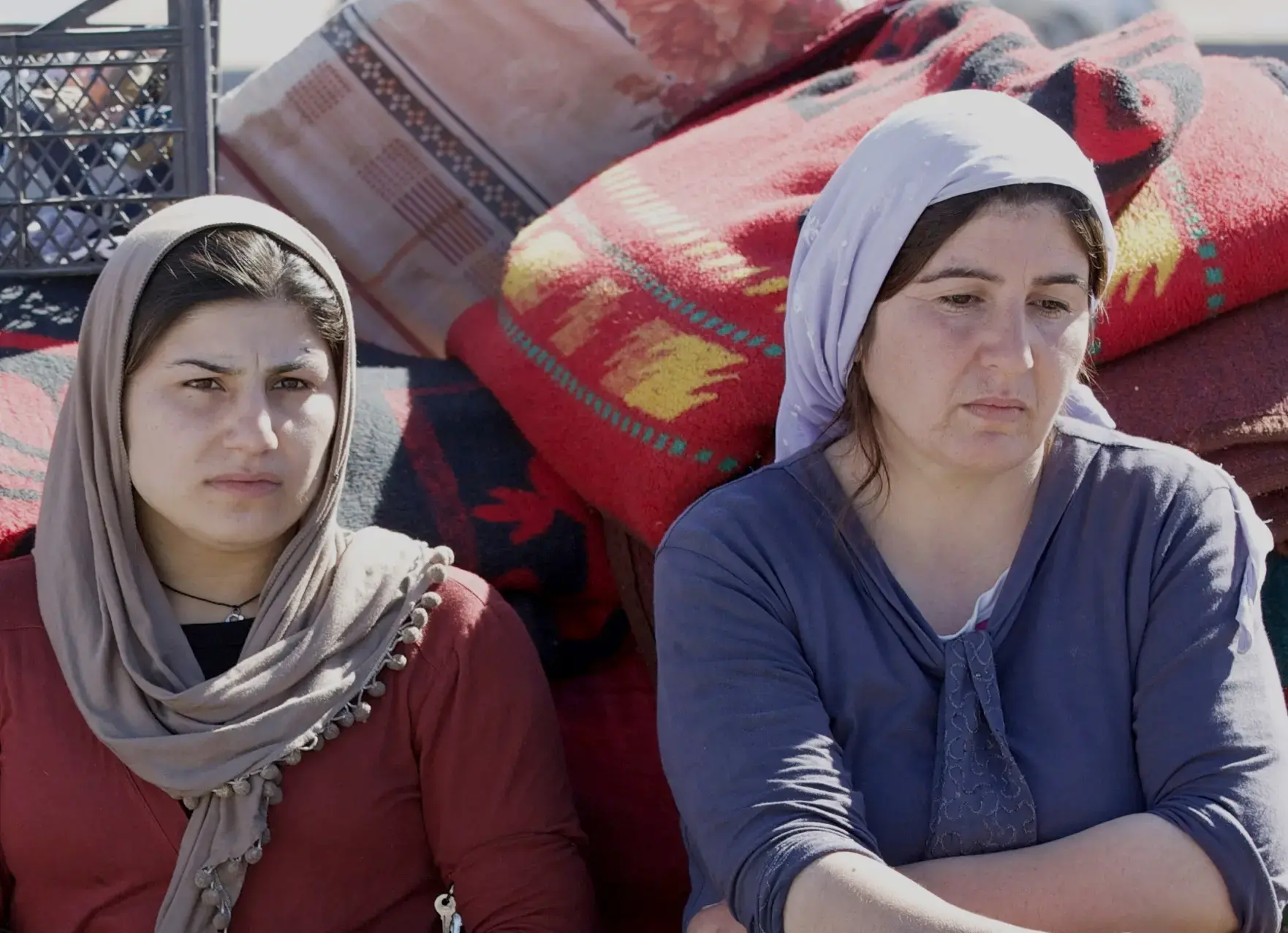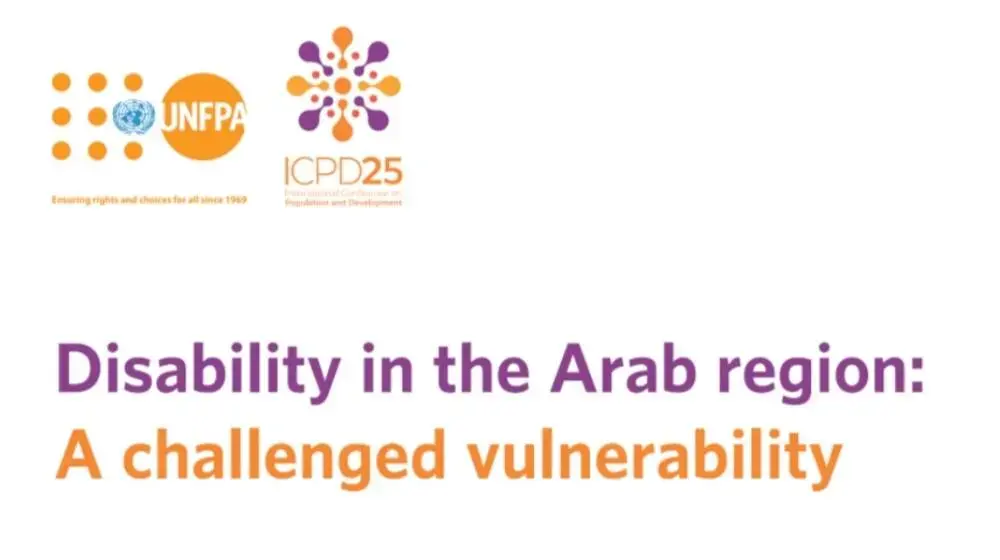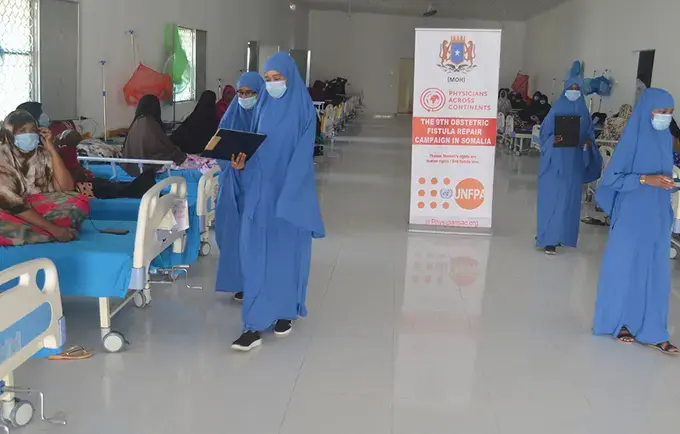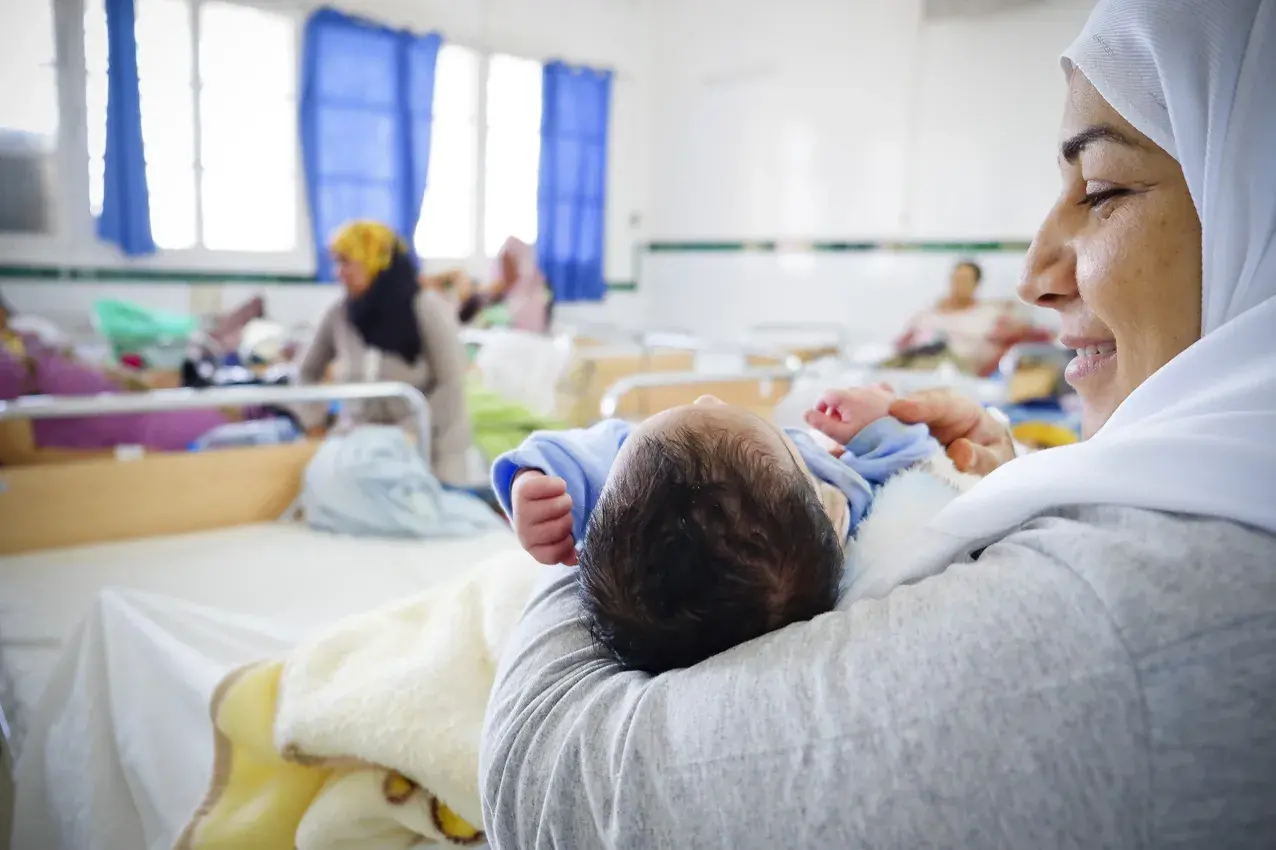In 2019, the number of international migrants worldwide reached nearly 272 million, or 3.5 percent of the world’s population. The Arab States was host to some 40 million migrants in 2019, of which 9.3 million were refugees and asylum seekers. These migrants accounted for 9.3 per cent of the population in the region.
The majority of migrants cross borders in search of better economic and social opportunities. Others are forced to flee crises – the current mass movement of refugees and displaced persons has given rise to xenophobia and calls for tightening borders. Internal migration within countries is also on the rise.
Migration is an important force in development and a high-priority issue for both developing and developed countries. In addition, almost half of all migrants are women, and most are of reproductive age. They have specific needs and human rights concerns.
UNFPA works to increase understanding of migration issues, advocate for better migration data, and promote the incorporation of migration into national development plans. UNFPA also advocates for addressing the special concerns of women and other vulnerable migrants, and works to meet the emergency reproductive health needs of refugees and internally displaced people.
A world on the move
Globalization has increased the mobility of labour. And in many developed countries, declining fertility and working-age populations have led to rising demand for workers from abroad to sustain national economies. Economic migrants are the world's fastest growing group of migrants, and many countries that once sent workers abroad – for example, Argentina, Ireland and South Korea – are now experiencing migrant inflows as well. According to the latest statistics from the International Labour Organization, nearly 73 per cent of the working-age migrant population were migrant workers.
Although migration between continents receives significant attention, most international migrants move over smaller distances. North America and Oceania draw most international migrants from other regions, but the majority of migrants in Africa, Asia, Europe, and Latin America and the Caribbean still reside in the region where they were born.
People also move to escape. The international community is currently experiencing a flood of migrants from countries in crisis, with the number of forcibly displaced persons in the world now higher than it has been at any time since World War II. According to the UN Refugee Agency, in 2019, 70.8 million individuals had been forcibly displaced as a result of persecution, conflict, generalized violence or human rights violations.
Internal migration – movement within countries – is also increasing, as people respond to inequitable distributions of resources, services and opportunities, or to flee violence, natural disaster or the increasing number of extreme weather events. The movement of people from rural to urban areas has contributed to the explosive growth of cities around the globe.
High fertility and rapid population growth in some developing countries create pressures to emigrate by straining infrastructure and social service systems. At the same time, migration has also become an important component of population growth in countries where fertility has declined. In some parts of Europe and Asia, migration is mitigating population declines related to low fertility and population ageing.
Vulnerable migrants
One of the most significant changes in migration patterns in the last half century is that more women are migrating on their own than ever before. Women now constitute almost half the international migrant population, and in some countries, as much as 70 or 80 per cent. In the Arab States Region, 33 percent of migrants in 2019 were women. Since women migrants frequently end up in low-status, low-wage production and service jobs, and they often work in gender-segregated and unregulated sectors of the economy, such as domestic work, they are exposed to a much higher risk of exploitation, violence and abuse. Women migrants are particularly vulnerable to human trafficking for the purposes of sexual exploitation, a multimillion-dollar business. Trafficked women are exposed to sexual violence and sexually transmitted infections, including HIV, yet they have little access to medical or legal services.
In addition, several million people migrate without proper authorization each year, according to the International Organization for Migration. Such migrants often face dangerous journeys, exploitation by criminal smuggling networks, difficult working and living conditions, intolerance when they arrive on foreign soil, and lack of access to basic social services, including health care. Their irregular status often leaves them afraid to seek help when their rights are violated.
Migration and development
Migration is increasingly seen as a contributor to development. Migrants make important contributions to the economic prosperity of their host countries, and the flow of financial, technological, social and human capital back to their countries of origin helps to reduce poverty and stimulate economic development there as well.
Remittances – money sent from migrants to their families back home – are a major source of capital for developing countries. Remittances feed and educate children and generally improve the living standards of loved ones left behind. These financial transfers are growing in significance. Officially recorded remittances to developing countries are expected to reach $440 billion in 2015. When remittances to high-income countries are included, the figure is estimated to reach $586 billion. In many countries, remittances are larger than either official development assistance or foreign direct investment. (Interestingly, available data show that women send home a higher proportion of their earnings than do men.) Migrants are also important vehicles for transmitting “social remittances” including new ideas, products, information and technology.
But migration has challenges, as well: It can deprive countries of highly educated and skilled workers, a process known as “brain drain.” It can also separate families and increase inequalities between those who receive remittances and those who do not.
Experts are increasingly focused on achieving mutually beneficial outcomes for both sending and receiving countries, as well as for the migrants themselves. There are now efforts to counteract the negative effects of brain drain, to encourage migrants to invest in their countries of origin, and to bring their knowledge, skills and technical expertise to the development process.The 2030 Agenda for Sustainable Development recognized migration as a key factor in development, and the Sustainable Development Goals adopted in September 2015 call for protecting the labour rights of migrant workers, combatting human trafficking networks, and promoting well-regulated migration and mobility. The international community is also seeking to tackle the development, governance and human rights challenges that compel people to flee their home countries.
Addressing the root causes of migration
Migration is increasingly seen as a contributor to development. Migrants make important contributions to the economic prosperity of their host countries, and the flow of financial, technological, social and human capital back to their countries of origin helps to reduce poverty and stimulate economic development there as well.
Remittances – money sent from migrants to their families back home – are a major source of capital for developing countries. Remittances feed and educate children and generally improve the living standards of loved ones left behind. These financial transfers are growing in significance. Officially recorded remittances to developing countries are expected to reach $550 billion in 2019, and remittances are now larger than foreign direct investment (FDI). (Interestingly, available data show that women send home a higher proportion of their earnings than do men.) Migrants are also important vehicles for transmitting “social remittances” including new ideas, products, information and technology.
But migration has challenges, as well: It can deprive countries of highly educated and skilled workers, a process known as “brain drain.” It can also separate families and increase inequalities between those who receive remittances and those who do not.
Experts are increasingly focused on achieving mutually beneficial outcomes for both sending and receiving countries, as well as for the migrants themselves. There are now efforts to counteract the negative effects of brain drain, to encourage migrants to invest in their countries of origin, and to bring their knowledge, skills and technical expertise to the development process.The 2030 Agenda for Sustainable Development recognized migration as a key factor in development, and the Sustainable Development Goals adopted in September 2015 call for protecting the labour rights of migrant workers, combatting human trafficking networks, and promoting well-regulated migration and mobility. The international community is also seeking to tackle the development, governance and human rights challenges that compel people to flee their home countries.
Addressing the root causes of migration
Migration should take place by choice and not by necessity. It is therefore essential that the option to remain in one's country is a viable one for all people. Policies are needed to ensure good governance, rule of law, access to justice, protection of human rights, and the elimination of conflict and violence. Education, decent employment, fair wages, affordable health care, and decent housing should be available to everyone without having to migrate. Migration policies must also be aligned with labour market needs, so that skills match job opportunities at home.
Young people, in particular, must be considered in this policymaking. Many countries are hard-pressed to provide decent jobs for the largest youth cohort in history, driving young people to leave their home countries. According to the latest statistics from the United Nations Population Division, in 2019, the number of international migrants below age 20 reached 38 million – 14 percent of all global migrants. In the Arab States region, slightly more than 1 in 5 migrants were under age 20 in 2019, accounting for 9 million young (22%) migrants in the region. Similarly, 4.5 million, or roughly 1 in 10 migrants (11%), were between the ages of 15 and 24 in 2019. Creating hope and opportunity by investing in young people is essential to fostering development in the world’s poorest regions, and will help countries reap a demographic dividend that can lift millions out of poverty.
UNFPA at work
UNFPA works to ensure that international migration is recognized as an important factor in development. An active member of the UN Expert Group on Migration Statistics and the regional Issue Based Coalition on Migration, UNFPA works to leverage the human, social and economic development potential of migration, advocating for better migration data to inform policies and promoting the incorporation of migration into national development plans.
UNFPA also promotes policy dialogue and enhances governments' ability to respond to issues relating to international migration. The Fund supports research and policy-oriented studies, and assists governments in their capacity to collect migration statistics, including gender-specific data. UNFPA also advocates for addressing the special concerns of women and young migrants, including the elimination of discrimination, abuse and trafficking.
In emergencies, UNFPA works with partners to meet the reproductive health needs of refugees and internally displaced women. UNFPA also provides reproductive health services and counselling for victims of trafficking, and provides technical assistance, training and support to governments and other agencies to help combat the problem.
Updated 28 May 2020.






